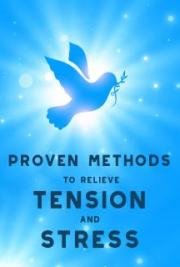
James Clear is a New York Times best-selling author who teaches people how to build good habits and break bad ones. His system is based on four laws that correspond to the three stages of behavior change: cue, craving, and response.
This Atomic Habits summary will discuss three key lessons from the book, organized around Clear’s framework of the Four Laws of Behavior Change. To get more detailed advice on changing your habits, read the full book summary at Shortform.
What is Atomic Habits?
Habits are the “compound interest of self-improvement.” Just like compound interest multiplies your money over time, small habits repeat over and over again to add up to big changes in your life. The key is to optimize your environment and make good behaviors as easy as possible. For example, if you want to eat healthy, keep only healthy foods in your house. Similarly, if you want to start exercising, make it as easy as possible.
James Clear has studied habits and decision-making for many years. He made his name as the author of one of the fastest-growing email newsletters in history and writes regularly for business publications. In Atomic Habits, he presents an actionable system for building new habits and breaking bad ones. The book’s foundation is the Four Laws of Atomic Habits, which explain how habits are formed and what it takes to change them. The laws are cue, craving, response, and reward. These simple steps are at the root of all habits and can be broken down into their atomic elements to understand how they work.
How Does Atomic Habits Work?
In his book Atomic Habits, James Clear describes how good habits work and the power of 1% improvements. He explains how the most successful people in business and other fields are able to achieve extraordinary results by iterating on small changes over time. This process is called compounding.
In order to build new habits, Clear suggests creating a system that minimizes friction. For example, if you want to eat healthily, it helps to keep healthy food in your home so that you can grab it without having to make a special trip to the store. Similarly, if you want to break bad habits, try to create systems that prevent you from doing them. One extreme example of this is the story of Victor Hugo who buried his nuclear codes beside a volunteer, making it impossible for him to start a nuclear war.
In addition, he recommends tracking your progress and finding an accountability partner to help you stick with your goals. Finally, he suggests using what he calls “gateway habits,” or small actions that will lead to larger habits.
What is Atomic Habits for?
Whether you’re looking to lose weight, learn to play the piano, or become an expert in your field, Clear has a system for you. The secret to success lies in building the right habits and destroying the bad ones that hold you back.
To build the right habits, you must first decide the kind of person you want to be. Then, you must prove to yourself that you’re that person by completing small goals. Once you’ve successfully changed your identity, you can begin forming the habit-forming cue, craving, and response loops that will eventually lead to long-term success.
Clear, one of the world’s leading experts on habit formation, distills complex ideas from biology, psychology, and neuroscience into an easy-to-understand guide for making good habits inevitable and bad ones impossible. This book’s practical strategies and proven ideas offer an ultimate framework for getting 1% better every day. Start today! Get Chapter 1 of Atomic Habits for free.
What is Atomic Habits for Children?
Cultivating atomic habits is a powerful way to improve student academic performance, motivation, and self-discipline. Clear’s framework can be adapted for anyone, but secondary school students can benefit from the strategies more than any other age group due to their brain plasticity.
Developing new habits requires more than just changing your current behaviors—you must also change who you are. You must decide who you want to be and then prove it to yourself with small wins. For example, if you’re trying to quit junk food, instead of simply cutting down your intake, you must replace it with something healthy like eating veggies or exercising.
The best ways to make changes stick are to track your progress, set goals, and surround yourself with support. To help with these tasks, Clear offers a variety of resources such as scorecards, cheat sheets, and habit contracts on his website. These tools can be downloaded as PDFs and are fully typeable, making them easy to use on computers, tablets, or iPads.






